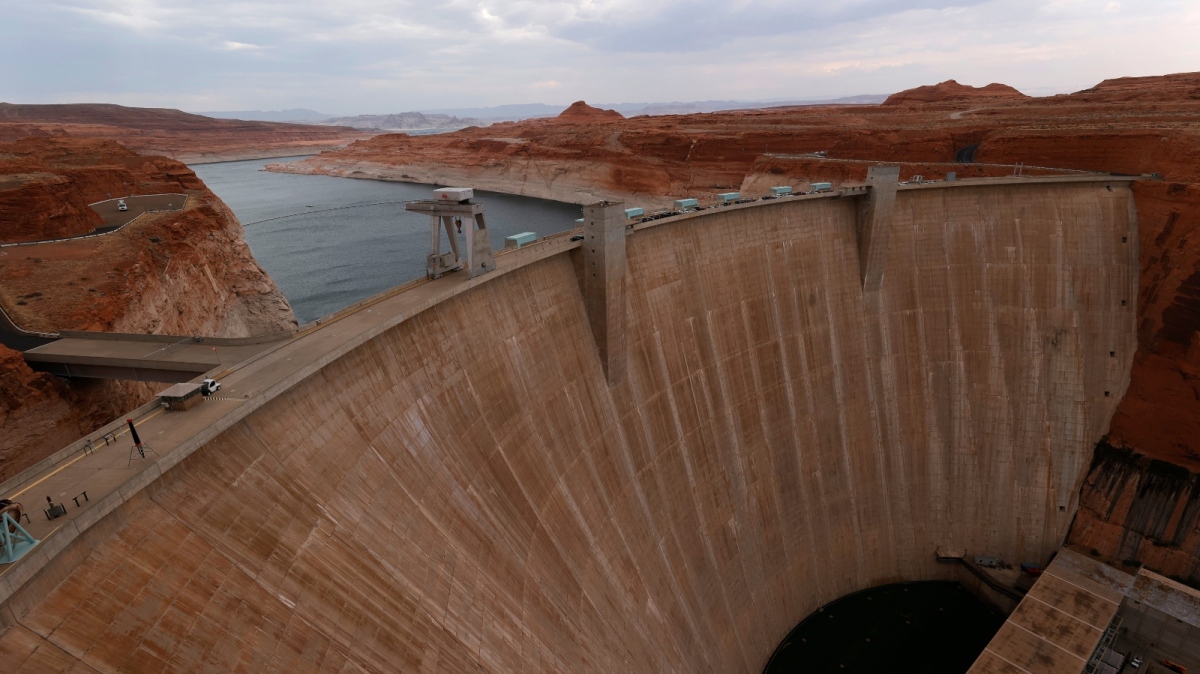
Stretching for 186 miles along the border of Utah and Arizona, Lake Powell serves as one of two major reservoirs that anchor the Colorado River. Last week, the lake reached a disturbing new milestone: water levels fell to their lowest threshold ever, since the lake was created by the damming of the Colorado in 1963.
The precipitous drop is the result of the decades-long drought in the American West that has ravaged the Colorado River for years, forcing unprecedented water cuts in states like Arizona. This newest milestone on Lake Powell, though, is significant for another reason. The reservoir also sustains a hydroelectric power plant, Glen Canyon Dam, that provides energy to millions of people. That power source, critical for rural and tribal communities across the region, is now in jeopardy.
The federal government expects Lake Powell’s levels to rise again this spring as mountain snow melts across the West, but there’s still a significant chance that the reservoir will reach the so-called “minimum power pool” stage some time in the next few years, at which point it will stop producing hydroelectric power altogether. The dry spell has been causing slo... Read more









